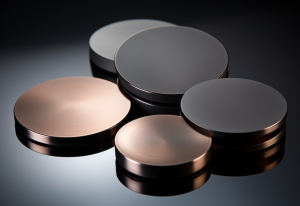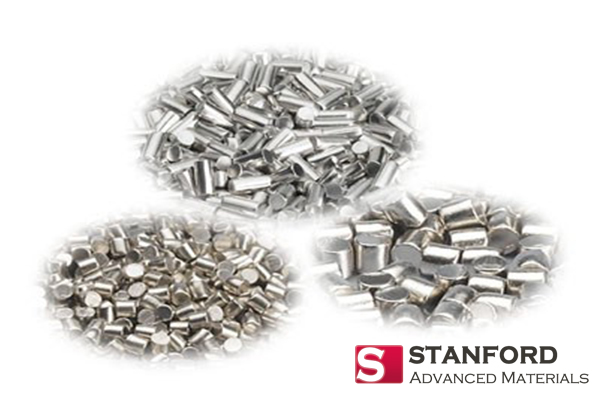Introduction to PVD Coating Technologies
Physical Vapor Deposition (PVD) represents a cornerstone in the realm of material science, offering unparalleled versatility in the fabrication of thin film coatings. This technique has become instrumental across various sectors, enabling the development of coatings that enhance the durability, efficiency, and performance of tools, components, and devices. At the heart of PVD’s success is the critical role of material selection, a process that directly influences the functional properties and longevity of the resulting coatings.
Comprehensive Overview of PVD Materials
PVD processes utilize a wide array of materials, each chosen for its unique properties and the specific requirements it meets. From metals and alloys to ceramics and inorganic chemicals, the selection is vast. Precious metals like gold and silver offer excellent reflectivity and aesthetic appeal, while alloys such as titanium-aluminum are selected for their strength and high-temperature resistance. Inorganic chemicals expand the possibilities further, allowing for coatings with specialized optical or electrical properties. Understanding the breadth of available materials is crucial for leveraging PVD technology to its full potential.
Key Categories of PVD Materials
The diversity of PVD materials can be categorized into several key groups, each offering unique characteristics for specific applications:
- Sputtering Targets: Sputtering is a PVD process where atoms are ejected from a solid target material and deposited onto a substrate. Materials like gold and chromium are commonly used, the former for its excellent electrical conductivity and the latter for its impressive corrosion resistance. These targets can be tailored in shape and size to fit precise requirements, ensuring efficient and uniform coating deposition.
- Evaporation Materials: In evaporation, the material is heated to a point where it vaporizes and then condenses on the substrate to form a thin film. Silver, for instance, is used for reflective coatings in optical applications, while copper’s high thermal conductivity makes it ideal for heat management solutions. Custom compounds and forms are available, enabling precise control over the coating’s properties.
- Inorganic Chemicals: This category includes a wide range of materials like silicon dioxide for optical coatings that enhance or reduce reflection and zinc sulfide for infrared applications. Available in various forms such as powders and pellets, these chemicals are custom-made to meet exact specifications, ensuring optimal performance in specialized applications.
- Specialized PVD Materials: For applications requiring specific material properties, advanced materials such as silicon carbide and aluminum nitride are used. Silicon carbide offers exceptional hardness and thermal conductivity, making it suitable for protective coatings in high-wear environments, while aluminum nitride is used in electronic applications for its excellent insulation properties.
Technological Advancements in PVD Materials
The field of PVD coating materials is continually evolving, driven by technological advancements and research. Innovations in material science have led to the development of novel alloys and composite materials designed for enhanced functional properties, such as improved wear resistance, thermal stability, and electronic performance. For instance, the creation of high-entropy alloys through PVD processes has opened new possibilities for materials with exceptional strength and durability. These advancements not only extend the application range of PVD coatings but also improve the efficiency and sustainability of the processes involved.
Optimizing PVD Performance
Achieving optimal performance in PVD coatings requires a meticulous selection of materials based on purity, grain size, and homogeneity. These characteristics directly impact the deposition process, influencing the coating’s uniformity, adhesion, and functional properties. For example, the use of high-purity targets minimizes the inclusion of impurities, enhancing the electrical conductivity of metallic coatings. Similarly, controlling the grain size of the target material can affect the surface texture and mechanical properties of the deposited film. Strategic material selection and target design are crucial for improving deposition rates, reducing waste, and ensuring high-quality coatings.
Sustainability and Environmental Considerations
As environmental awareness grows, the sustainability of manufacturing processes has come under scrutiny. In the context of PVD materials, there is an increasing push towards environmentally friendly practices, including the use of recyclable materials and processes that minimize harmful emissions. Efforts are being made to develop eco-friendly PVD materials, such as biodegradable metals and alloys, that do not compromise on performance. Moreover, the adoption of closed-loop recycling systems for PVD targets and consumables reduces waste and conserves resources, aligning the technology with greener manufacturing principles.
Applications Across Industries
The versatility of PVD coating materials has led to their widespread application across various industries. In the aerospace sector, protective coatings are used to enhance the durability and resistance of components exposed to extreme conditions. The automotive industry benefits from both functional and aesthetic coatings, improving the performance and appearance of vehicle parts. In electronics, PVD materials enable the development of components with superior electrical, thermal, and optical properties, crucial for the advancement of devices. The application of PVD technologies in these fields highlights the importance of material selection in driving innovation and meeting the specific needs of each industry.
Future Directions in PVD Coating Materials
Looking ahead, the future of PVD coating materials lies in the exploration of new material compositions and the development of advanced coating technologies. Research is focused on discovering materials with unprecedented properties, such as ultra-high temperature resistance or enhanced electronic capabilities. The integration of nanotechnology in PVD processes is another exciting frontier, promising coatings with nano-scale precision and functionality. As the demand for more sophisticated materials grows, the continuous innovation in PVD technologies will undoubtedly play a pivotal role in shaping the future of manufacturing and technology.






